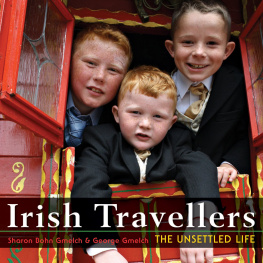George Gmelch - Behind the Smile, Second Edition
Here you can read online George Gmelch - Behind the Smile, Second Edition full text of the book (entire story) in english for free. Download pdf and epub, get meaning, cover and reviews about this ebook. year: 2012, publisher: Indiana University Press, genre: Politics. Description of the work, (preface) as well as reviews are available. Best literature library LitArk.com created for fans of good reading and offers a wide selection of genres:
Romance novel
Science fiction
Adventure
Detective
Science
History
Home and family
Prose
Art
Politics
Computer
Non-fiction
Religion
Business
Children
Humor
Choose a favorite category and find really read worthwhile books. Enjoy immersion in the world of imagination, feel the emotions of the characters or learn something new for yourself, make an fascinating discovery.

- Book:Behind the Smile, Second Edition
- Author:
- Publisher:Indiana University Press
- Genre:
- Year:2012
- Rating:3 / 5
- Favourites:Add to favourites
- Your mark:
- 60
- 1
- 2
- 3
- 4
- 5
Behind the Smile, Second Edition: summary, description and annotation
We offer to read an annotation, description, summary or preface (depends on what the author of the book "Behind the Smile, Second Edition" wrote himself). If you haven't found the necessary information about the book — write in the comments, we will try to find it.
Behind the Smile, Second Edition — read online for free the complete book (whole text) full work
Below is the text of the book, divided by pages. System saving the place of the last page read, allows you to conveniently read the book "Behind the Smile, Second Edition" online for free, without having to search again every time where you left off. Put a bookmark, and you can go to the page where you finished reading at any time.
Font size:
Interval:
Bookmark:

THE
SMILE
OF CARIBBEAN TOURISM

Bloomington and Indianapolis
Indiana University Press
601 North Morton Street
Bloomington, IN 47404-3797 USA
Fax orders 812-855-7931
by any means, electronic or mechanical, including photocopying
and recording, or by any information storage and retrieval system,
without permission in writing from the publisher. The Association
of American University Presses' Resolution on Permissions
constitutes the only exception to this prohibition.
 The paper used in this publication meets the minimum
The paper used in this publication meets the minimumrequirements of American National Standard for Information
SciencesPermanence of Paper for Printed Library Materials,
ANSI Z39.48-1992.
Behind the smile : the working lives of caribbean tourism / George
Gmelch. 2nd ed.
p. cm.
Includes bibliographical references and index.
ISBN 978-0-253-00123-8 (pbk. : alk. paper)
ISBN 978-0-253-00129-0 (electronic book)
1. TourismCaribbean AreaAnecdotes. 2. TourismCaribbean AreaEmployeesAnecdotes. I. Title.
G155.C35G63 2012
331.7'619172981dc23
Ermine Greaves,
Jerry Handler,
Susan Mahon,
Marcus O'Neale,
and
Janice Whittle,
who contributed so much to
my Bajan education over the years
the Second Edition



TOURISM
Font size:
Interval:
Bookmark:
Similar books «Behind the Smile, Second Edition»
Look at similar books to Behind the Smile, Second Edition. We have selected literature similar in name and meaning in the hope of providing readers with more options to find new, interesting, not yet read works.
Discussion, reviews of the book Behind the Smile, Second Edition and just readers' own opinions. Leave your comments, write what you think about the work, its meaning or the main characters. Specify what exactly you liked and what you didn't like, and why you think so.











